All Himeji Arts and Life Project
- 更新日:
- ID:20797
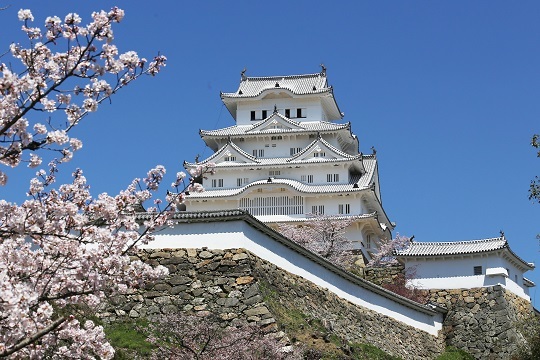
Himeji Catsle
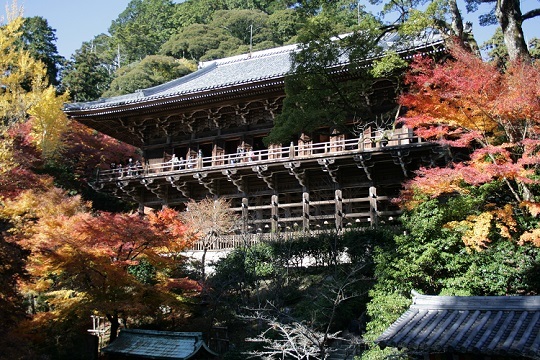
Shoshazan Engyoji
1) Project Objectives
Art generates its greatest worth and richness of meaning through its integration into all aspects of our everyday lives. Guided by this belief, Himeji City Museum of Art serves as a platform for harnessing the power of art to rediscover and renew awareness of Himeji’s rich regional culture, extending from its sea to the islands, mountains, forests, and fields that nourish the lives of its citizens. The All Himeji Arts and Life Project takes art as the vehicle for promoting local culture and sharing a revitalized image of Himeji with Japan and the world.
With the cooperation of Himeji’s two great historical centers of culture, Himeji Castle and Engyōji Temple, Himeji City Museum of Art aims to cultivate “culture clusters” that draw from the city’s tangible and intangible cultural resources to generate new values and modes of appreciation that speak directly to the demands of contemporary society. To do so, the museum is dramatically expanding its exhibition programing through the development of new year-long and multi-year programs foregrounded by a variety of innovative special exhibitions.
The heart of his project is a four-year program (2021–2024) that invites five “core artists” to develop a series of events and projects. Each artist is an internationally renonwned and pioneering figure in his or her field: NAKAYA Fujiko (fog artist), HIBINO Katsuhiko (art project developer), SUGIMOTO Hiroshi (contemporary artist), teamLab (art collective), and KUMA Kengo (architect and urban designer)
2) Major Activities
1. Cultural Forum (Venue: Himeji Castle, Museum, Engyōji Temple)
Public
discussions, free talks, and lectures led by All Himeji Arts and Life “core
artists” promote an “art cluster” centered on Himeji City Museum of Art and
elevate its profile as a platform for the arts.
Core Artist
- Hibino Katsuhiko
- Sugimoto Hiroshi
- teamLab
- Kuma Kengo
- Nakaya Fujiko
| year | Theme |
|---|---|
| 2021–22 | Essence and Potential in Himeji’s Three Great Works of Architectural Beauty: Castle, Temple, and Museum |
| 2022–23 | Architecture, Art, Religion |
| 2023–24 | From Hōitsu and Kiitsu to teamLab: The Possibilities of Edo Rinpa |
| 2024–25 | A Castle Defeated and Victorious: What is Victory in Architectural Beauty? |
2. Garden Art Project (Venue: Museum)
Outdoor installation projects transform the World Heritage site and Japanese National Treasure Himeji Castle, the Nationally Registered Tangible Cultural Property Himeji City Museum of Art, and the Museum Garden containing thirteen works of sculpture into a unified artwork of exceptional scenic beauty.
Core Artist
- Kanno Yoshihiro (Composer)
- Myochin Munetaka (Blacksmith)
- Nakaya Fujiko
| year | Theme |
|---|---|
| 2020–21 | Echoes of Tamahagane: Installation of Sound and Light |
| 2021–22 | Japanese Mindscapes Exhibition Chapter Three: “Echoes of Tamahagane” Installation of Sound and Light |
| 2022–23 | Fog Sculpture 1: Conversations Between Bodies |
| 2023–24 | Fog Sculpture 2: Listening to the Landscape |
| 2024–25 | Fog Sculpture 3: Body–Sound–Light |
3. Artists in Residence (Venue: Engyōji Temple)
A veritable mecca of the arts, the temple Engyōji serves as the base for a series of projects conceived and implemented by the core artists, including installations, performances, talks, workshops, and other activities that investigate Himeji’s tangible and intangible cultural resources. Through the investigation of the unique character and contemporary meaning of these resources, the artists are invited to cultivate new and unexplored values that will contribute to new forms of tourism that facilitate regional rejuvenation.
|
year |
Invited Artist |
Theme (provisional) |
|---|---|---|
|
2021–22 |
Hibino Katsuhiko |
Day After Tomorrow Art School: A Project Connecting City, Sea, Mountain, Temple, Region, and People |
|
2022–23 |
Sugimoto Hiroshi |
Special Performance: Buddhist Temple as a Site of Contemporary Art |
|
2023–24 |
teamLab |
Ultrasubjective Space in the Sacred Landscape of a Total Work of Art |
|
2024–25 |
Kuma Kengo |
21st Century Edition of “Design and Work for a Long Life”: Functional Beauty for the Future |
4. Visiting Artist Exhibitions (Venue: Museum)
Visiting artists in residence plan exhibitions that incorporate a multifaceted approach to our understanding and appreciation of Himeji Castle, Engyōji Temple, and the art museum, revealing perceptive new insights that stimulate the five senses.
Visiting Artist
- Hibino Katsuhiko
- Sugimoto Hiroshi
- teamLab
- Kuma Kengo
| year | Exhibition Theme (provisional) |
|---|---|
| 2021–22 | Special Exhibition Japanese Mindscapes: Swords, Resonances and Seascapes |
| 2021–22 | Day After Tomorrow Art |
| 2022–23 | Day Before Yesterday Art: Contemporary Art of the Past |
| 2023–24 | Reflections on Edo Rinpa: Approaching a Borderless World Through Ultrasubjective Space |
| 2024–25 | What is Nature? Kuma Kengo’s Architectural Aesthetics Toward a 22nd Century Perspective |
5. Visiting Artist & The Museum Collection (Venue: Museum)
The visiting artist and museum curators work together to re-evaluate the museum’s collection and develop collaborative exhibitions that incorporate artworks by the visiting artist and works belonging to the museum collection in order to offer new interpretations and foster renewed appreciation.
3) Visiting Artist Profiles
HIBINO Katsuhiko
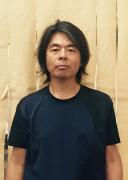
Born in Gifu City, Japan, in 1958. Dean of Faculty of Fine Arts and Professor in Intermedia Art Department, Tokyo University of the Arts. Director of Museum of Fine Arts, Gifu. Board Chairman and Committee for Social Responsibility Chairman of Japan Soccer Association. Graduated from Tokyo University of the Arts in 1984. Won Grand Prize at Japan Graphic Art Exhibition in 1982. Completed graduate school of Tokyo University of the Arts in 1984. He participated in the 1986 Sydney Biennale and submitted works to the 46th Venice Biennale in 1995. In 2016 he received the Minister of Education, Culture, Sports, Science and Technology Award at Japan's Art Encouragement Prize in 2015 (Art Promotion Division). His art projects shine light on local regional characteristics. From 2015 he has supervised the art project “TURN,” which fosters the creation of art and bridging of differences by facilitating exchanges among people from diverse backgrounds that transcend disability, gender, nationality and other social circumstances. From 2017 to 2020 he was an officially designated Tokyo2020 Cultural Olympiad. From 2017 he has been supervising the Diversity in the Arts Projects (DOOR), which is aimed at fostering “a society where diverse groups of people can live together.”
Link
Hibino Katsuhiko "Day after Tomorrow Art"
An Ecosystemic Movement Inhabiting the Hearts and Minds of People
SUGIMOTO Hiroshi
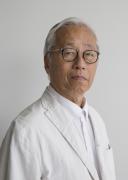
Born in Tokyo, Japan, in 1948. Moved to the United States in 1970 and New York City in 1974. Active in a diverse range of artistic genres, including photography, sculpture, installation, performance, architecture, garden design, calligraphy, and cuisine. His work deals with such major themes as the transience of history and existence, and seeks to bridge western and eastern concepts through empiricist and metaphysical approaches to knowledge and investigations into the unique character of time, human perception, and the origins of consciousness. His works are included in major art museum collections throughout the world, including the Metropolitan Museum of Art (New York) and the Centre Pompidou (Paris). Best known for his black-and-white photographic works, including his “Seascapes,” “Theaters,” and “Architecture” series.
In 2008 he established the New
Materials Research Lab architecture planning office, which has overseen such
projects as the renovations of the MOA Museum of Art in Shizuoka (2017) and the
Guesthouse Washin in Kiyoharu Art Colony in Yamanashi (2019). In 2009 he founded
the Odawara Art Foundation. 20 years after its initial conception, the Odawara
Art Foundation Enoura Observatory opened in October of 2017. Well-versed in a
range of premodern Japanese art and traditional performance art, he received
international acclaim for his production of the puppet play “Sugimoto Bunraku:
The Love Suicides at Sonezaki.” He premiered a production of “At the Hawk’s
Well” in autumn of 2019. Author of several books including Time Exposed, Utsutsu na zo,
Origins of Art, Art and Leisure, and Sense of
Space. Recipient of the 1988 Mainichi Art Prize, the 2001 Hasselblad
Foundation International Award in Photography, and the 2009 Praemium Imperiale
Award for Painting. In 2010 he received the Medal with Purple Ribbon from the
Japanese Government. In 2013 he was designated Officier de L’ordre des Arts
et des Lettres (France). In 2017 he was named Person of Cultural Merit (Japan).
teamLab
teamLab(f.2001) is an international art collective.Their collaborative practice seeks to navigate the confluence of art, science, technology, and the natural world. Through art, the interdisciplinary group of specialists, including artists, programmers, engineers, CG animators, mathematicians, and architects, aims to explore the relationship between the self and the world, and new forms of perception.
In order to understand the world around them, people separate it into independent entities with perceived boundaries between them. teamLab seeks to transcend these boundaries in our perceptions of the world, of the relationship between the self and the world, and of the continuity of time. Everything exists in a long, fragile yet miraculous, borderless continuity.
teamLab exhibitions have been held in cities worldwide, including New York, London, Paris, Singapole, Silicon Valley, Beijing, and Melbourne among others. teamLab museums and large-scale permanent exhibitions include teamLab Borderless and teamLab Planets in Tokyo, teamLab Borderless Shanghai, teamLab SuperNature Macao, and teamLab Massless Beijing, with more to open in cities including Abu Dhabi, Hamburg, Jeddah, and Utrecht.
teamLab's works are in the permanent collection of the Museum of Contemporary Art, Los Angeles; Art Gallery of New South Wales, Sydney; Art Gallery of South Australia, Adelaide; Asian Art Museum, San Francisco; Asia Society Museum, New York; Borusan Contemporary Art Collection, Istanbul; National Gallery of Victoria, Melbourne; and Amos Rex, Helsinki.
KUMA Kengo
Born in Yokohama in 1954. Studied architecture at the University of Tokyo. After serving as professor in the Department of Architecture (Graduate School of Engineering), he is now a lecturer and professor emeritus at the University of Tokyo. Driven to become an architect by his childhood experience of Tange Kenzo’s Yoyogi National Gymnasium built for the 1964 Tokyo Olympics, he later studied with architects Hara Hiroshi and Uchida Yoshichika. He was drawn to the beauty of rural villages during research conducted in the Sahara Desert as a graduate student. After serving as a visiting researcher at Columbia University, in 1990 he founded the architecture firm Kuma Kengo and Associates. He has completed projects in more than 20 countries and been awarded prizes including the Architectural Institute of Japan Award, the Spirit of Nature Wood Architecture Award (Finland), and the International Stone Architecture Award (Italy). He aims to design projects that create symbiotic relationships between manmade structures and their natural surroundings, with buildings made on a human scale that are sensitive and intimate. Highly attuned to the sourcing and particularities of architectural materials, he tries to incorporate materials other than concrete and iron that will lead the way toward a post-industrial form of architecture
NAKAYA Fujiko
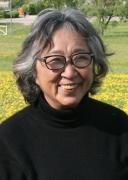
Born in Sapporo in 1933. An internationally acclaimed artist best known for her “fog sculpture.” After attending university in the United States and beginning her career as a painter, she became involved with the American experimental art collective E.A.T., founded by Robert Rauschenberg and others. Through connections with this group, she premiered her first fog sculpture at the 1970 World Exposition in Osaka.
Using purified water, high pressure pumps, and a series of unique atomizing nozzles that she helped develop, her artificial fog installations respond to the meteorological and topographical conditions of their environment. Molded by the atmosphere and sculpted by wind, the ever-changing form of the fog sculpture activates its surrounding environment in a relation of mutual instantiation. Her interest in the environment was greatly influenced by her father, experimental physicist and pioneering scholar of glaciology, Nakaya Ukichiro (1900–1962).
In addition to her work with fog, she has long been regarded as a pioneering figure of the 1970’s media art movement in Japan. She produced video art with perceptive themes relating to contemporary society and collaborated with overseas artists. Founded the artist-run Video Gallery SCAN in Tokyo’s Harajuku neighborhood in 1980. She devoted much energy to discovering and promote the work of young video artists.
Her fog-based artworks have been installed in parks and museums, including more than 80 sites across the world. In 2017, she exhibited a new work at the new wing of the Tate Modern in London. Her first large-scale solo exhibition was held at Art Tower Mito between 2018–19. She continues to unveil new works in Japan, America, Germany, and France. In April 2021, her fog sculpture “Dynamic Earth 1” was permanently installed outside the Nagano Prefectural Museum of Art.
4) Inquary
68-25 Honmachi, Himeji City, Hyogo 670-0012, Japan
Phone: 81-79-222-2288 Facsimile 81-79-222-2290
Opening hours
10 : 00 a.m. to 5 : 00 p.m.(admission until 4 : 30 p.m.)
OPEN
Tue - Sun

